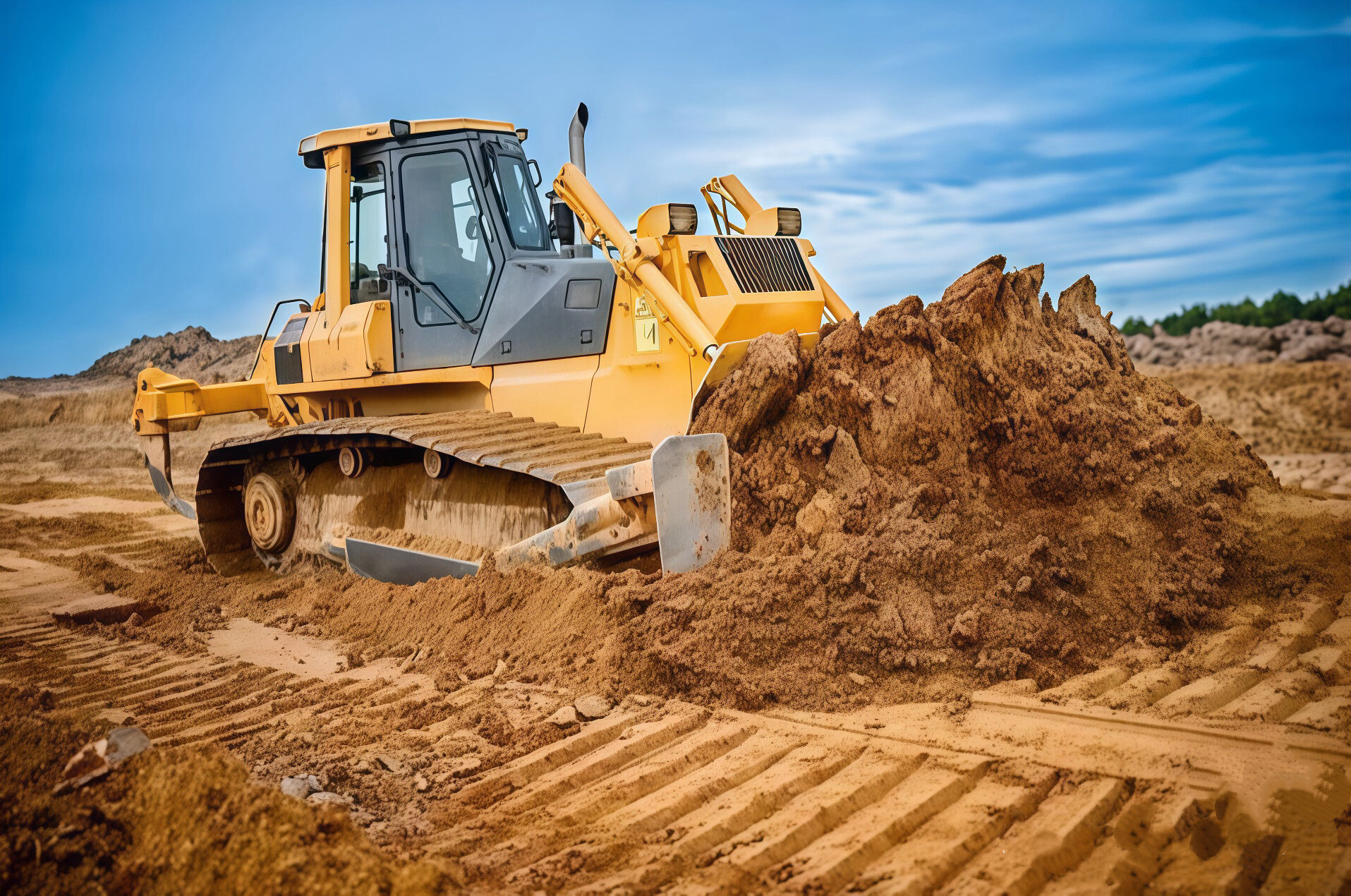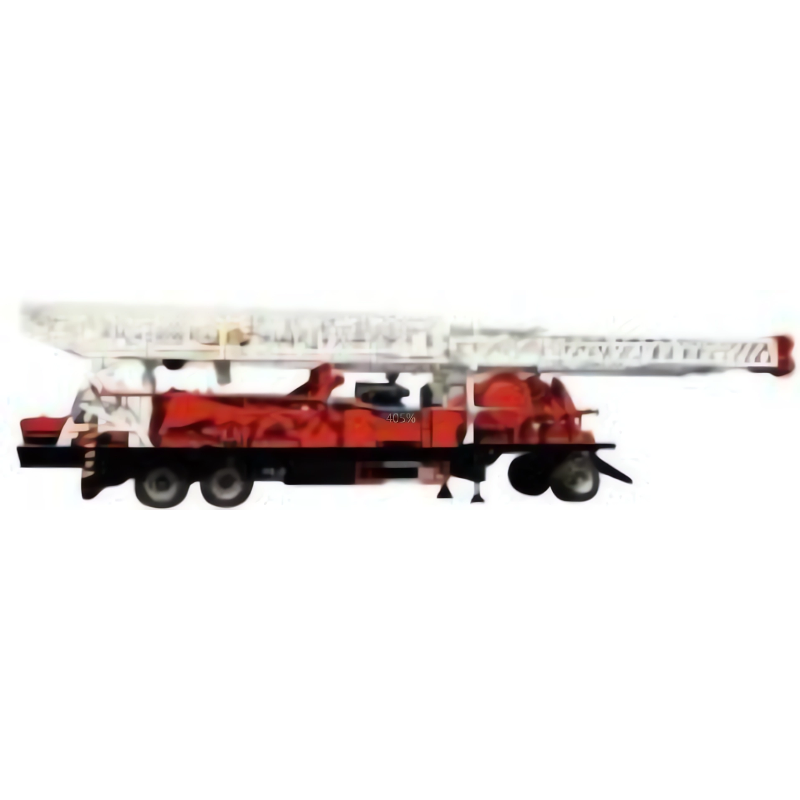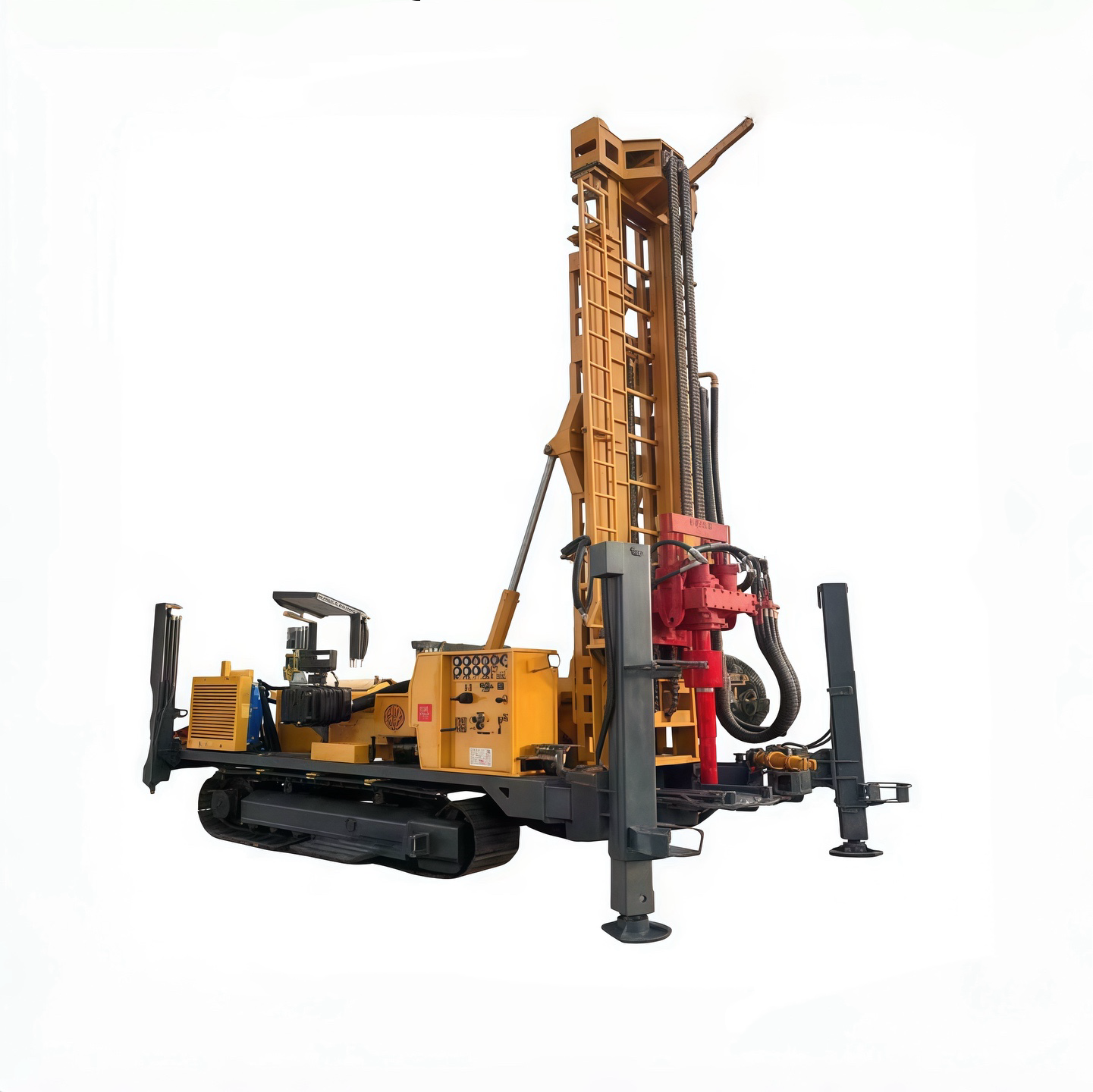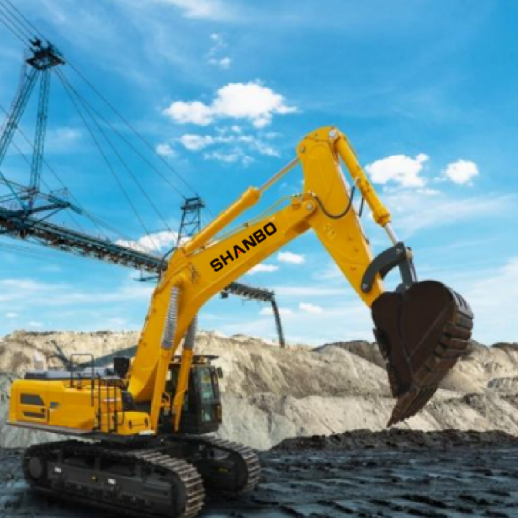Koparko-ładowarka a spycharka: kluczowe różnice i najlepsze zastosowania
Gdy mowa o maszynach budowlanych używanych w branży konstrukcyjnej, ogrodniczej lub przy pracach wykopowych, dwie maszyny często rzucają się w oczy: koparko-ładowarka i buldożer. Oba urządzenia zostały zaprojektowane do realizacji konkretnych zadań, a zrozumienie różnic między nimi jest kluczowe przy wyborze odpowiedniego sprzętu do pracy.
Chociaż oba urządzenia są mocne i niezawodne oraz nieodzowne w wielu branżach, ich zastosowanie, mocne strony i możliwości są zupełnie inne. Poniżej przedstawiamy najważniejsze różnice między koparko-ładowarkami a buldożerami, ich charakterystykę oraz najbardziej odpowiednie przypadki zastosowania każdego z nich, aby umożliwić podjęcie najlepszych decyzji dotyczących realizowanych projektów.
Czym jest koparko-ładowarka?
Koparko-wywozarka to wszechstronna maszyna szeroko stosowana w ogrodnictwie i budownictwie. Składa się z przedniego kosza, używanego do wykopywania, oraz ramienia tylnego, do którego mocowany jest mniejszy osprzęt lub kosz, umożliwiający bardziej precyzyjne prowadzenie prac ziemnych. Urządzenie jest montowane na podwoziu przypominającym ciągnik, co zapewnia mobilność i stabilność. Zarówno urządzenia przednie, jak i tylne mogą być kontrolowane z obrotowej kabiny przez kierowcę, umożliwiając efektywne wykonywanie wielu zadań na placu budowy.
Koparko-wywozarki cieszą się uznaniem ze względu na swoją wszechstronność. Przedni kosz może służyć do kopania, podnoszenia i transportowania luzem materiałów takich jak ziemia, żwir czy piasek, podczas gdy ramię tylne jest idealne do wykonywania rowów, wykopów lub fundamentów. Większość modeli umożliwia wymianę osprzętu, na przykład na świdry lub młoty hydrauliczne, co dodatkowo zwiększa ich przydatność. Wszechstronność koparko-wywozarek czyni je popularnym wyborem w projektach związanych z kopaniem i przemieszczaniem materiałów.
Czym jest buldożer?
Natomiast buldożer to ciężki sprzęt maszynowy zaprojektowany specjalnie do pchania dużych ilości ziemi, gruzu lub innych materiałów. Jest wyposażony w szeroką, płaską ostrzową płytę na przedniej części, która służy do przesuwania lub wyrównywania gruntu, kamieni lub śmieci. Buldożery są napędzane na ciągnikach gąsienicowych (podobnych do gąsienic czołgowych), a nie na kołach, co zapewnia im większą przyczepność i stabilność na nierównym lub miękkim terenie. Niektóre modele są również wyposażone w tylny harrower do rozbijania twardych powierzchni, takich jak skały lub ubity grunt.
Buldożery są zaprojektowane z myślą o sile i wytrzymałości, a także potrafią poradzić sobie z zadaniami związanymi z masowym przekopywaniem ziemi. Najlepiej sprawdzają się w zastosowaniach wymagających ogromnej siły do czyszczenia terenu, wyrównywania powierzchni lub transportowania ciężkich materiałów na duże odległości. Ich solidna budowa czyni je niezbędnymi w dużych projektach budowlanych, przy rozbudowie autostrad i zagospodarowaniu terenu.
Główne różnice między koparkami teleskopowymi a buldożerami
Chociaż oba maszyny są wykorzystywane w budownictwie i robocie ziemnej, to ich konstrukcja i przeznaczenie je od siebie odróżniają. Poniżej przedstawiono główne różnice między koparkami tylno-ładowarkami a buldożerami:
1. Konstrukcja i budowa
Koparka tylno-ładowarka: Koparka tylno-ładowarka to wielofunkcyjna i uniwersalna maszyna o podstawie podobnej do ciągnika rolniczego, wyposażona z przodu w łyżkę, a z tyłu w ramię strzałowe z kubełkiem. Kołowy podwozie zapewnia jej doskonałą mobilność na twardym podłożu, takim jak nawierzchnia asfaltowa lub ubita ziemia. Możliwość jednoczesnego kopania i ładowania sprawia, że jest to bardzo przydatna maszyna w operacjach małych i średnich.
Buldożer: Buldożer to pojazd gąsienicowy z ostrzem z przodu, przeznaczony do pchania, posiadający ciągłe gąsienice, które umożliwiają skuteczne przyczepność na nierównym, błotnistym lub trudnym terenie. Jego głównym zadaniem jest przesuwanie dużych ilości materiału, a nie precyzyjne kopanie.
2. Funkcjonalność
Ładowarka odwrotna: Ładowarki odwrotne są idealne do kopania i ładowania. Tylny zaczep służy dokładnemu kopaniu, czyli tworzeniu rowów lub dołów, podczas gdy przedni kosz służy do ładowania i transportowania materiałów. Ładowarki odwrotne są zatem odpowiednie do prac, które wymagają zarówno manipulowania materiałami, jak i wykopywania.
Spychacz: Spychacze służą do wyrównywania i pchania. Są przede wszystkim używane do przesuwania dużych ilości ziemi lub materiałów zdechetowych po terenie budowy. Spychacze są mniej odpowiednie do kopania głębokich rowów, ale świetnie sprawdzają się we wyrównywaniu, czyszczeniu i przygotowywaniu dużych powierzchni terenu.
3. Mobilność
Ładowarka odwrotna: Ładowarka odwrotna, dzięki swojej kółkowej konstrukcji, może szybko poruszać się między miejscami pracy, często z prędkością 25 mil na godzinę lub większą. Dzięki temu stanowi doskonały wybór dla prac wymagających częstych przemieszczeń lub wykonywania zadań w wielu strefach.
Bulldozer: Bulldożery, jako pojazdy gąsienicowe, są wolniejsze i mniej wygodne podczas przemieszczania się na duże odległości. Zwykle są transportowane na plac budowy za pomocą przyczep ze względu na swoją niską prędkość oraz potencjalne uszkodzenia, jakie mogą wyrządzić nawierzchni drogowej.
4. Wielkość i skala
Ładowarka tylnia: Ładowarki tylne są mniejsze i bardziej zwrotne, co czyni je odpowiednimi do pracy na ograniczonych przestrzeniach lub w środowisku miejskim. Ich mniejsze rozmiary pozwalają na pracę na ciasnych placach budowy, gdzie większe maszyny nie mieszczą się.
Bulldozer: Otóż bulldożery zazwyczaj są większe i cięższe, co czyni je idealnym wyborem do dużych projektów. Waga i rozmiar bulldożera czynią go mniej odpowiednim do małych lub ciasnych obszarów, ale idealnym do dużych operacji.
5. Załączniki i uniwersalność
Ładowarka tylnia: Możliwość zamontowania różnych osprzętów, takich jak młoty, żaki czy wiertła, zwiększa wszechstronność ładowarki tylnej. Taka wszechstronność czyni ją idealną do wielu zadań poza zwykłym kopaniem i załadunkiem.
Bulldozer: Chociaż niektóre buldozery są używane z tylnymi ripperami lub innymi osprzętami, ich główną funkcją pozostaje pchanie i wykańczanie powierzchni. Są mniej wszechstronne niż koparko-wywozarki, ale nie mają sobie równych w przesuwaniu dużych ilości materiału.
Najlepsze zastosowania dla koparko-wywozarek
Koparko-wywozarki świetnie sprawdzają się w pracach wymagających precyzyjnego kopania, manipulowania materiałami lub pracach na ograniczonych przestrzeniach. Oto niektóre z najlepszych zastosowań dla koparko-wywozarek:
- Kopanie rowów i wykopywanie: Koparko-wywozarki są idealne do kopania rowów na instalacje takie jak woda, gaz lub kable elektryczne. Tylna ramię umożliwia dokładne, wąskie i głębokie cięcia.
- Oprawa krajobrazowa: W zastosowaniach takich jak budowa stawu, instalacja systemów podlewania lub formowanie terenu w ogrodach przydomowych czy komercyjnych, koparko-wywozarki oferują idealne połączenie możliwości kopania i transportu materiału.
- Małe i średnie inwestycje budowlane: Koparko-wywozarki są idealne na mniejszych placach budowy, takich jak fundamenty domów czy niewielkich budynków komercyjnych, gdzie przestrzeń jest ograniczona.
- Obsługa materiałów: Czołowy kosz jest idealny do załadunku ciężarówek ziemią, żwirem lub zanieczyszczeniami, co sprawia, że koparki tylne są idealne do prac porządkowych lub usuwania materiału.
- Budowa miejska: W środowiskach miejskich, gdzie przestrzeń jest ograniczona, kompaktowy rozmiar i zwrotność koparki tylnej czynią ją dobrym wyborem.
Najlepsze zastosowania dla buldożerów
Buldożery to maszyny do ciężkiego robienia wykopów i dużych projektów. Oto ich najlepsze zastosowania:
- Czyszczenie terenu: Buldożery doskonale radzą sobie z usuwaniem dużych obszarów roślinności, skał lub zanieczyszczeń, dlatego są nieodzowne przy przygotowywaniu terenu pod budowę lub rolnictwo.
- Budowa dróg: W przypadku budowy dróg lub autostrad, gdy wymagane jest wyrównywanie i spłaszczanie gruntu, buldożery zapewniają moc i zwrotność potrzebną do przesuwania terenu.
- Wielkoskalowe wykopy: Gdy trzeba przenieść bardzo duże ilości ziemi, takie jak w górnictwie czy budowie zapór, buldożery są najbardziej efektywne.
- Przygotowanie terenu: Bulldożery są idealne do wyrównywania dużych działek pod projekty budowlane, takie jak centra handlowe czy fabryki.
- Kruszenie twardych powierzchni: Bulldożery, wyposażone w tylny podrywacz, potrafią rozdrabniać twarde grunty, skały lub asfalt, a zatem mogą być wykorzystywane do burzenia lub czyszczenia terenu.
Wybór odpowiedniej maszyny do projektu
Decyzja, czy użyć buldożera czy koparko-wyrzutni, zależy od konkretnych potrzeb zadania. Jeżeli zadanie wymaga precyzyjnego kopania, manipulowania materiałami lub pracy w ograniczonej przestrzeni, to koparko-wyrzutnia będzie lepszym wyborem. Wielofunkcyjność i zwrotność uczyniły ją głównym wyborem na zadania małe i średnie, zwłaszcza w środowisku miejskim lub rezydencjalnym.
Z drugiej strony, jeżeli projekt wiąże się z przemieszczaniem dużych ilości ziemi, czyszczeniem dużych obszarów lub wyrównywaniem terenu pod dużą inwestycję budowlaną, preferowanym wyborem będzie buldożer. Jego siła i przyczepność są idealne do ciężkiej pracy na dużych lub trudnych terenach.
W niektórych przypadkach oba maszyny można używać razem na placu budowy. Na przykład buldożer może wyrównywać i formować grunt, podczas gdy koparko-ładowarka wykonuje precyzyjne wykopywanie lub załadunek materiałów. Zrozumienie zalet każdej z maszyn pozwala na osiągnięcie maksymalnej wydajności i produktywności.
Podsumowanie
Koparko-ładowarki i buldożery to przydatne maszyny w robotach ziemnych i budowie, jednak różnice w ich konstrukcji, funkcjonalności i zastosowaniu czynią je idealnymi do różnych zadań. Wielofunkcyjność i precyzja koparko-ładowarki są idealne do precyzyjnego wykopywania, ładowania i manewrowania w ograniczonej przestrzeni, podczas gdy siła pchania i ogromna moc buldożera nie mają sobie równych przy ciężkim oczyszczaniu terenu i dużych pracach wykończeniowych. Oceniając zakres, teren i wymagania projektu, można wybrać odpowiednią maszynę, która pozwoli skutecznie i wydajnie wykonać zadanie.
Shanbo to zaufana marka w branży maszyn budowlanych, znana z produkcji trwałe, wydajne i wysokiej klasy urządzeń dostosowanych do potrzeb nowoczesnych projektów. Skupiając się na innowacjach i niezawodności, Shanbo wytwarza szeroką gamę maszyn ciężarowych, w tym koparko-ładowarki, buldożery, motornice i inne urządzenia do robót ziemnych, zaprojektowanych tak, aby sprostać trudnym terenom i wymagającym warunkom na placu budowy.
Polecane produkty
 Gorące wiadomości
Gorące wiadomości
-
„Water Savior” 200 m wiertła do studni wodnych z obwrotową cyrkulacją przybyły do Uzbekistanu
2025-03-28
-
Przewodnik po transporcie spychacza: Najlepsze praktyki, wskazówki dotyczące bezpieczeństwa i czynniki kosztowe
2025-12-15
-
Kompletny przewodnik po przewozie sprzętu budowlanego: metody, koszty i wskazówki
2025-12-12
-
Jak Bulldozer Wykonuje Pracę: Kluczowe Zadania, Techniki i Zastosowania
2025-12-11
-
Eksploracja możliwości największego koparki na świecie
2025-12-10
-
Niezbędne wyposażenie buldożeru: komponenty, osprzęt i zastosowania
2025-12-09













